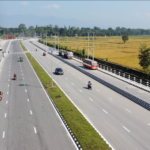At the Dubai International Airport, one can whizz through immigration in a jiffy. Through just one look at the camera, the passenger’s data gets matched on the stored passport and then the process is complete. No wonder they can handle 87 million passengers in a year and aim to handle 200 million passengers by 2030. The airport experience is all about convenience and making travelers feel welcome.
In contrast, Nepal’s international airport, once among the best in the region during the early 1990s, now feels more like a hurdle. Hesitation in fully adopting automation or online services is holding back our efficiency. Rather online services continue to mean having to stand ‘on line’. We would like to have the maximum extent of human intervention possible. Document checks to enter the airport can be automated, but people do not prefer that. Security experience at the start can be made much friendlier. With additional training, the security personnel can improve the passenger experience while ensuring professionalism.
Moreover, check-in counters could be eased through bag drop lines and self-check-in kiosks. Once the boarding passes are issued, everything can be made electronic. For example, Dubai, Singapore, and even newly built airports in countries like Cambodia provide human contactless checking systems. However, Nepal is still relying on stamps after security, in which the ink tends to be wet and may even smudge in the shirt pocket. Till one boards the plane, a passenger has to go through multiple human interventions that can be streamlined through automation.
Similarly, once travelers are out of the aircraft, the immigration experience could be significantly improved to provide a more welcoming experience. An e-passport eliminates the need for human intervention, but we insist on punching all the data. At times, the immigration officers even say that the scanners do not work or the system is old. Similarly, many airports have scanning machines after you exit immigration, but nowhere do you feel like you are a potential criminal being scanned. The experience can be made more friendly. For instance, having good sturdy trays and replacing them on time makes things smoother. These activities show that we do not require world-class companies to come and do it. It just requires the mindset to say that you are providing world-class service.
Thirty years ago, it is true we had few trained staff and the traffic was not great. Today, if you pass through Hamad International Airport, Doha, it would be rare you would not bump into a Nepali staff – be it at security, guest services, or duty-free stores. For instance, I met a former Soaltee colleague who was the manager looking after the premium business class lounge. He was leading a team that is delivering best services that helped them to win the World Airline Award – Skytrax eight times for the best lounges. In contrast, I remember having a conversation who was part of the management team of the Kathmandu airport and did not even know what Skytrax awards were. Addressing such a knowledge gap is another big challenge. While we have Nepalis managing the best lounges and airports in the world, we continue to be rated as one of the worst airports in the world.
What we need is a change in mindset. If one watched the Ultimate Airport Series – Dubai in National Geographic, one would be in awe as to how they can execute a runway expansion project of a billion dollars in just a month. The TIA will be undergoing improvement with flight hours being restricted but we all know it will likely take longer than six months to finish. Since there are no incentives for the project to be finished on time, people tend to make money, rather than pay penalties, for delays.
For Nepal’s tourism future, it is critical we fix our airports. It is not necessary that we need our own airline. Zillions will fly through if the services at the airport are good and the passengers enjoy the airport experience. We know there are many world-class companies who can manage the airport well. We should not rely on folks who put up small home elevators at the airport or carpets that are never dusted. The same officials who use premium Apple phones do not seem to aspire to the same level of quality when it comes to airport services. The three international airports can be given in a package to a global firm, then it makes commercial sense for the managers also. In terms of geopolitics, it is about Nepal to be able to explain to its neighbors why it chose the particular firm and ensure that security concerns are addressed.
Ultimately, the push for improvement has to come from the Nepali travel and hospitality businesses. The old cartel-oriented folks are fading out, and the new set of entrepreneurs, who are getting into the hospitality and travel business, are the right set of people to push this agenda. They should not get to the protectionist, mediocre mindset of the past but think of Nepal as a destination that can compete in the global stage. After all, Nepal’s greatest asset is its “brand smile”, which has kept tourism moving despite all the challenges.
Sujeev is the founder CEO of beed. He leverages over 25 years of experience in diverse fields and geographies to advise, lead and inspire. With comprehensive networks in Nepal’s public, private, civil and diplomatic sectors, Sujeev is a trusted business and policy advisor and respected strategic thinker. From economies of developing countries to economies of human beings, he moves across different worlds, with his passion for the Himalayas being the axis.





